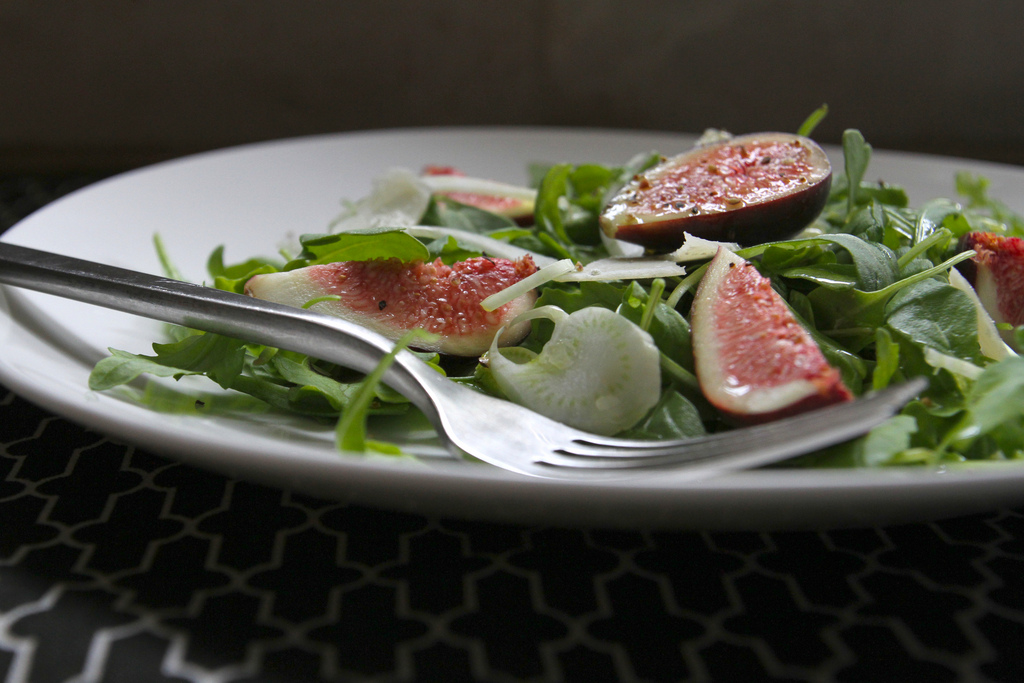
Ant farms as toys in the late 1950s and early 1960s. Stirrup pants in the late 1980s. That marble-mouthed way of singing inspired by Eddie Vedder of Pearl Jam in the 1990s. Styles of entertainment, clothing, and music can be hot for a minute and stale the next. But some popular things have staying power. The Beatles came to America in 1964, and bands of all stripes are still citing their influence 50 years later. A pill initially approved for “severe menstrual disorders” in 1957 ended up getting approved as birth control and remains one of the most common contraceptives today. Karl Benz built the first vehicle designed to be propelled by internal combustion in 1886, and now more than 1 billion people are speeding along the world’s highways and side streets in automobiles.
In the perpetual game of hot-or-not, what’s on our plate seems to be a particular source of obsession. Will kale still be popular 10 years from now? Will we ever get sick of pizza? What kinds of crazy ingredients can we throw together and still call a taco? In advance of David Sax’s visit to Zócalo to discuss where food fads come from, we asked chefs, restaurateurs, historians, and food writers: What’s the difference between a food fad and a food revolution? And when does it affect the larger culture?

It used to be that when a new foodstuff, product, or technique came along it took months or even years to gain traction in the marketplace. Take arugula, for example. I know it’s hard to imagine a world without this upscale Italian green, but that world existed back in the late 1970s. A chef who wanted arugula had to beg produce companies to import the stuff and pay upfront for large airfreight deliveries in case you turned out to be the only customer. Often what arrived was sad and wilted. The few salvageable leaves would end up on a plate carefully dressed with extra virgin olive oil. A “fad” was born at the beginning of the 1980s.
Then the “revolution” of farm-to-table came along. Small farmers emerged who were willing to plant seeds handed to them by chefs who traveled. They worked to find more chefs to sell to so that a stable market and robust distribution could be created. After about five years or so, three-pound bags of arugula were part of a stream of ingredients available to any chef. Five more years, and small retail bags showed up in grocery stores. Some would say that the real revolution here was that chefs started driving taste on a large scale. Who knows if this would have been able to be sustained without the appearance of FoodTV, the Internet, and the “celebrity chef”?
One food revolution rarely talked about as such has happened stealthily, with our knowledge and complicity, and we surrendered without a shot: the industrial food revolution, when we embraced the outsourcing of food made away from the home. Now we eat food made by strangers whose responsibility is to shareholders and a bottom line. It’s been consumed for two generations without regard to long-term consequences. Of course, we as a society love leaving planning and consequences to someone else. But me? I’m ready for the counter-revolution.
Evan Kleiman, a chef and cookbook author, is the host of Good Food on KCRW. Her website is www.evankleiman.com.

Food fads are fascinating, perhaps the start of something really new in human history.
They’re not a traditional culinary revolution. Those haven’t come along very often—perhaps only a dozen major occasions in history. When they have come, it’s because a society has adopted a new religion, a new politics, or a new theory of health. For example, as I describe in my book Cuisine and Empire, the introduction of Protestantism, anti-monarchical political theories, and new theories of health in the 17th century brought about a new interest in vegetables, the near-disappearance of spices, the banishment of sweets to the end of the meal, as well as the family meal replacing the court banquet.
Fads are a two-way street. On the one side are individual desires to experiment, to show that we know what’s up, to create our own style of eating, and the disposable income to do this. On the other side is an incredibly efficient food system offering all kinds of novelties and a host of experts, and style guides dispensing advice and rules for eating.
This combination of individual freedom to choose and an institutional setting that offers the choice has only occurred in the last generation or so.
And in its own way, individual choice is a radical change. It’s perhaps the beginning of the thin end of the wedge of a seismic shift away from having to eat or go hungry or (for the better off) having to eat what society or those in power dictate.
A couple of generations ago, fashion became democratic. Now food is going the same way. What fun. What anxiety. What a chance to make mistakes. What a chance to learn to create a style of eating tailored to our own particular needs.
Which isn’t to say I hope never to see another cupcake again.
Rachel Laudan is author of the prize-winning Cuisine and Empire: Cooking in World History. She holds a doctorate in history and philosophy of science from University College London and lives in Austin, Texas.

It’s easy to confuse a food fad with a revolution. Restaurant and food media exist to cover new food fads much as TMZ exists to cover celebrity snafus—trends must die, or there will be no news. But a food revolution? That’s harder to market to viewers, because it requires a fundamental shift in our relationship with food.
Take the local food craze that seemed to spring from nothing but the pages of Michael Pollan’s The Omnivore’s Dilemma in 2006. The tone of the book made it tempting to dismiss the “locavore” trend as nothing more than out-of-touch urbane shoppers placing $9-a-pound tomatoes into their eco-hemp totes at farmer’s markets. That was a fad, and it would have stopped there if Pollan had simply been proclaiming a standalone new idea and winning over only consumers.
Pollan was giving voice to a nascent, scattered movement that had already been building for well over a decade. He was clueing readers in to the start of the latest food revolution, which had gotten under way entirely without him.
Last week, I met some of the people involved in Detroit at the Food and Community Conference, which gathers W.K. Kellogg Foundation grantees and interested parties to talk about changing the food system. I’m as tempted as anyone to scoff at the fad of locavores—and even the touchy-feely name of the event. But it’s difficult to remain wholly cynical after spending a few days amid 700 activists—ranging from black chef-farmers from Georgia, start-up bakers from Detroit, farmworkers from Florida, and agricultural extension agents from California—all of whom work pretty hard to push for healthier, regional food systems.
Where Pollan urged the affluent to change the world by shopping, these are folks that change the world by doing.
And that, really, is what separates a fad from a revolution: It doesn’t just inspire shoppers. It has ground troops.
Tracie McMillan is the author of the New York Times bestseller The American Way of Eating: Undercover at Walmart, Applebee’s, Farm Fields and the Dinner Table. She is based in Brooklyn.

I was in the final stages of working on The Soil Will Save Us: How Scientists, Farmers and Foodies are Healing the Soil to Save the Planet when I got an e-mail from my brother-in-law. He’d been motorcycling through California, met some guy along the way, and told him about my book. Oh yeah, the guy replied: He’d seen some news items about soil and declared it a hot topic at that very moment. He seemed to think that my book—not out for another six months—would sadly debut during a cooling-down stage.
But really, soil? I might be prejudiced, but I can’t think of anything more germane to our ongoing discussion of food. After 10,000 years of practicing agriculture, scientists have only recently learned what goes on in that dark kingdom below, where countless microorganisms—6 billion per tablespoon of soil—bring plants nutrients, feed on the carbon plants snatch from the air through photosynthesis, and fix some of that carbon in the soil. Much of the excess carbon dioxide floating in the atmosphere actually came from the soil, as agriculture trashed the ancient partnership between plants and soil microorganisms—tilling may look pretty, but it disrupts the habitat of these underground organisms, and bare soil offers them the equivalent of a food desert. The apex of this trashing is modern, industrial agriculture, with deeper tilling and chemicals that warp the important relationships our food crops have with the rest of nature.
Is soil trendy right now? Maybe, but that’s not necessarily a bad thing. “Trend” comes from the Old English word “trendan,” meaning to turn. We have finally turned our eyes to the soil, which has to be part of any discussion of good food. Let’s just make sure we don’t turn away.
Kristin Ohlson is the author of The Soil Will Save Us: How Scientists, Farmers and Foodies are Healing the Soil to Save the Planet. An award-winning writer whose work has been anthologized in Best American Science Writing and Best American Travel Writing, Ohlson lives in Portland, Oregon.

A food fad can be short-lived, popular, or long-lasting, but it doesn’t necessarily qualify as a food revolution. We still hear people discussing cabbage soup diets and bemoaning the death of Tab, two fads from the 1980s. We don’t consider the Wonut—the waffle-doughnut crossbreed we’ve created—or Waffles Café as starting a food revolution. But we are part of the army that contributes to it.
A food revolution affects the larger culture when it appeals to broader audiences and creates industry movement. The movement from dining-in to dining-out, processed food, and the continued combinations of culinary cultures (fusion restaurants) are great examples of revolutions. The revolutionary products or dishes must be familiar in taste, attractive in appearance, and consistent in quality, yet somehow new or unique.
When we opened Waffles Café, we had to offer a wide variety of options for Chicago’s diverse population and palate. We offer options from the decadent to the healthy for breakfast, lunch, and dinner, and believe that today’s diner has a more individualized approach to how she or he selects the restaurant and meal that day. Today’s customers want to build their own omelet, juiced drink, waffle, or burger where possible.
The Wonut is part of the larger revolution to hybridize the best of multiple foods. The Wonut was created in response to the increased desire for a sweeter breakfast item that gave punches of flavor incorporating the best parts of its waffle and doughnut predecessors. We think the Wonut is part of the larger revolution for alternatives.
Whether the Wonut is a successful or not, our menu continues to evolve to respond to this larger demand to customize dining experiences.
Alex Hernandez and Kevin Thilborger are co-owners of the restaurant chain Waffles Café in Chicago. Hernandez has a long history with restaurant management at some of Chicago’s top restaurants. Thilborger is a financial and healthcare consultant running two practices in the city.

The difference between a food fad and a food revolution is largely a difference in impact: a food fad is temporary, without much of a long-term effect; a revolution, on the other hand, represents an entire paradigm shift and upends how we think about, and interact with, what we’re eating. The consequences of putting bacon and uni on everything at least so far seem to be far less reaching than, say, the impact of sliced bread, or the invention, and widespread use, of the microwave.
When these movements affect the “larger culture” is a trickier question. It’s likely at least partly when well-funded and politically connected industries put enough money and power behind a campaign; Cargill and various soda companies, for example, invested quite a bit to get stevia FDA-approved for use in food and drinks.
Beyond that, I think it depends on how you define the “larger culture.” Many fads, trends, and revolutions are the outcomes of a large group of people already eating or thinking a certain way, but the dominant group—i.e., the people with power and capital and the ability to produce, reproduce and drive information—seems to notice only when these movements become relevant to it.
Loncheros are a good example: these food trucks have been a part of, and have been affecting, many large communities in Los Angeles for quite some time, but they’ve only become visible to the dominant culture just recently, thanks to whatever confluence of factors that made it acceptable to eat at the so-called “gourmet” food trucks. And ta da, all of a sudden, issues like decriminalizing street food are deemed urgent, and we’re acknowledging, if not romanticizing, the work of a taquero.
Tien Nguyen co-wrote L.A. Son: My Life, My City, My Food with Roy Choi and Natasha Phan. She is the senior food writer for the L.A. Weekly.

Pie is the new cupcake.
I came upon this headline repeatedly as I started up my pie company in 2010. I had unwittingly stumbled into a zeitgeist just as it was happening, and I’m sure it was a boon for business. Despite the obvious benefits, it made me a bit uncomfortable: Hasn’t pie always been great? What will become of those delicious cupcakes? Can’t people just eat what they like?
Pie had its day, then macarons, then cake pops, then the mighty Cronut. People started putting bacon in everything, until the inevitable bacon backlash. I’d venture that many of us in the food industry have an uneasy relationship with these fads. While they might boost sales for that bacon-carbon-miso cookie one day, by the next it’s just old news. These latest hits can often distract from the subtler stories chefs are trying to tell on the plate.
That said, maybe I should lighten up! For one, fads can be fun. (Pet rocks, anyone?) And occasionally, they can lead to real change. Take the trend towards eating organic, unprocessed foods: Just this month, Vermont became the first state to require labeling on all food from genetically modified organisms (GMO) sold at retail, come summer of 2016. The fact that people even know what GMO means comes in great part from shifting awareness of organic food from radical communes to the aisles of Walmart. Granted, Vermont’s just one state out of 50, and the regulations on what’s organic and what’s not are murky at best, but I’d say it’s a step in the right direction. Now if you’ll excuse me, I’ve got to get back to building out our dessert and cocktail bar—it’s the latest trend, ya know!
Allison Kave is the author of First Prize Pies, inspired by her pie company in New York City. She has taught pie making at the French Culinary Institute and the James Beard Foundation, and her pies have been featured in publications including Food & Wine, Saveur, and The New York Times. She recently co-founded Butter & Scotch, a dessert and cocktail bar opening later this summer in Brooklyn.



